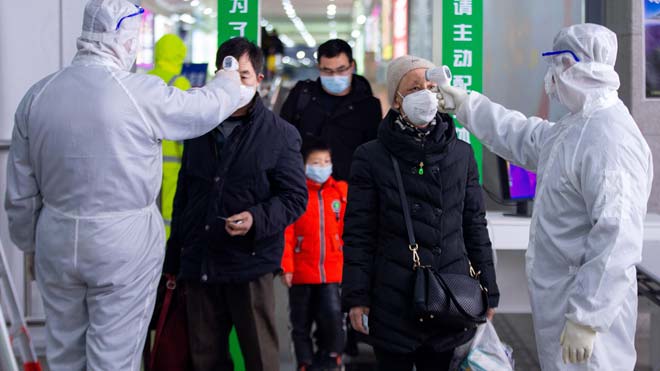While China’s draconic containment methods have proven fairly effective, COVID-19 continues to rear its head in other parts of the world.
To make matters even worse, a new layer of complexity has just been announced by Chinese authorities: a group of patients that had recovered from the virus tested positive again in follow-up controls.

A report by the health authority in China’s Guangdong province, the country’s most populated province with 113 million people, said that 14% of the patients that had recovered from the coronavirus showed new signs of it in later check-ups.
In other words, over 1 in 10 people that got rid of the virus got infected again. While this has not yet been confirmed or fully understood, it makes for a startling figure.
Song Tie, deputy director of the Guangdong Center for Disease Control and Prevention, said to local media they are still trying to understand the phenomenon but preliminarily linked it to patients not being fully recovered from lung infections, which could explain the positive test of the virus. This might not mean that the patients did not get reinfected, but rather did not get rid of the virus completely in the first place.
In order to be released from a hospital in China, patients have to test negative twice in throat or nose swabs test, as well as having a scan that shows no lung lesions and reporting no clear symptoms as fever — based on the National Health Commission guidelines.
The cases with reinfection of coronavirus were detected on People’s Hospital Nº 8 in Guandong. A total of 13 discharged patients tested positive again but didn’t show renewed symptoms, according to Li Yueping, director of the intensive care unit at the hospital.
The tests were done from anal swabs, a method not used much in other parts of China. But there’s a reason behind it: the virus was found in fecal samples in research done by Guangzhou Medical University, and since then hospitals in Guandong have started doing anal swab tests.
The 13 patients that tested positive are now under observation at the hospital, while new tests are being done to understand the reasons for the incidence. New controls and monitoring will also be implemented on discharged patients, who will be more closely checked on.
Other provinces of China have also started reporting cases of patients testing positive again. A patient was readmitted in the city of Chengdu at Sichuan provinces after testing positive, while other cases were also found in the province of Hainan, located in southern China.
It’s still not clear how impactful reinfection can be, but it is something that should be considered as authorities work to contain and combat the virus.
Across China, 80% of the cases are mild, and 14% are severe. The rest 6% become critically ill. The World Health Organization (WHO) yesterday praised China’s “ambitious” and “agile” measures to contain the virus, which likely saved thousands of lives. Innovative technology has been implemented such as drones and apps.
Outside China, many countries have reported large numbers of cases. Almost 1,000 are in South Korea, 270 in Italy, and 160 in Japan. Brazil reported yesterday the first case in South America as well. More than 2% of all of the cases are now estimated to be in other countries than China.






